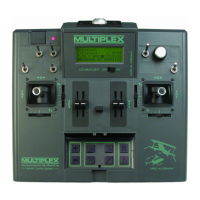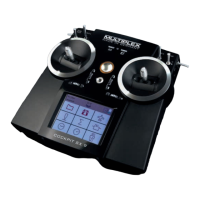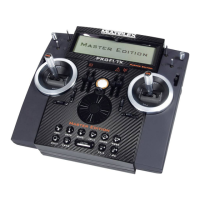SAFETY
Radio-controlled
models
are
not
toys!
Even
small
models are capable of causing damage
to
property
and even to
people.
The following notes
are
just
suggestions and are
provided
with
the best of intentions.
They
are certainly
not meant
to spoil
your pleasure
in
the
hobby.
Please read
these
points
and follow our
guidelines
at all times. You will save
yourself
much expense
and
trouble.
Insurance
Operating radio-controlled models
-
especially
model
aircratl
-
does
involve
certain
risks,
even
when
you
take
the
greatest
care, and
for
this
reason
third
party
insurance
must
be considered a basic essential.
Private liability
insurance is one
possible
solution.
A
second
is
to
join
a
modelclub,
whereby
suitable coverwill usually be available
through the
nationalorganisation
to which the club
belongs.
Club colleagues will soon fill
you
in
on
how
best to obtain
insurance.
Prevention
-
better than cure
Safety begins
when
you
are designing and building
your
model.
Control surface
linkages, radio
installation etc.,
are
points
which later
play
a major role in
the safety of
your
mooer.
The
biggest contribution to safety is one
you
can make: by
operating
your
radio
control system and
your
model
carefully
and responsibly. The following list is not meant
to be complete, and the
points
are not listed in order
of
importance. lt is
only
intended
to
give you
a
few
ideas of
what
you
can and
should
do.
.
Check
plug-in
conneclions, servos and control
surf ace
linkages regularly.
.
Charge
your
transmitter and receiver
battery
in
the
proper
manner
and check the state of charge
before
you
fly
(use
a battery
testeo.
.
Carry out regular range checks
as described
in
the section covering the
receiving
system.
.
Do not
switch on
your
transmitter unless
you
are
certain thal other
modellers
close bv are
not
using the same channel.
'
Never run down
your
transmitter and
receiver
batteries close to the limit of their capacity.
Note
also that
new
batteries do
not
achieve full
capacity until they have completed several
charge
/
discharge cycles.
.
Each
time
you
switch memories, and before every
flight,
check each
function
carefully.
Are
the servo travels and directions correct?
Stick
left:
conlrol surface
/
steering
left
Stick back: elevator up etc.
.
Always
exlend
your
transmitter aerial to
its full
extent before
you
start a
flight.
.
Use original
MULTIPLEX
crystals and
accessories exclusivelvl
The legal
side
(tot
the U.K. only)
Radio
controlled
models
are of two types
-
those which
operale on the
ground
or on
water, known
as
"surface"
models,
and those
which
operate
in
the air. The
first
group
includes
model cars, trucks
and buggies, and also
model
boats of all types.
The
second encompasses fixed-wing
model
aircraft and rotary-wing machines
(mainly
heli-
copters). Radio
controlled toys come into a different
category, and operate at 49 MHz where
a small band
is
orovided
for low
oower
radio
devices.
The trequency
bands available for radio controlled models
are shown below:
Frequency in MHz
26.960 to 27.280
34.995 to 35.255
40.665 to 40.955
458.500
to
459.500
Use
General
Air
Surface
General
Since the
26127 MHz
band is also allocated for
Citizens
Band radio
and other users,
and the
458/459 MHz
band is
also allocated
to telemeüy and other devices, radio
controlled
models
are
generally
operated on the 34/35
MHz
band
(usually
known simply
as 35
MHz)
and the
40
MHz band.
Please note
that 40 MHz is
dedicated solely to surface
models, and
34135
MHz is
dedicated solely to model
aircraft. Model
car and boat operators must not use the
35
MHz
band. and model aircraft must not
be
flown
on the
40
MHz
band.
As of 1 January 1981 model
control equipment was
exempted from the licensing requirements
of the
Wireless
Telegraphy Act 1949. This
simply means that no licence
is required
to operate RC
equipment
in
the UK.
lf
you
need lurther information
on technical restrictions,
and lhe
regulations which
exempt model control from
licensing,
please
contact:
The Low Power
Radro Section
Radiocommunications
Agency
Room 712, Waterloo Bridge House,
Waterloo Road. London.
SEl 8UA
Teleohone:
071 215 2058
Which receivers
can
you
use?
Tne
EUROPA
rnc
transmitter
lransmits
nine
channels.
You can use
any
PPM receiver which
can decode nine
channels.
To
decode nine channels does not necessarily
mean
that
nine
receiver
outouts are available.
A MICRO
5t7@ceiver has
only seven outputs, butdecodes
nine
channels and can therefore be used with
the
EURO-
PA mc
transmitter.
All receivers in
the cu(ent MULTIPLEX ranqe
can be
used:
e.g.
FM DS, Mini
9,
Micro
5/7
Older receivers which
can also be used:
Micro
9, Uni 9,
Mini 7,
Uni 4
lf in any
doubt, ask
your
specialist dealer or the
MULTIPLEX HOTLINE.
GB-3- Manual
EUROPA mc

